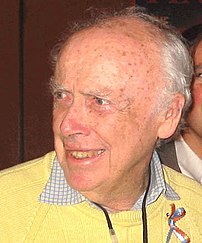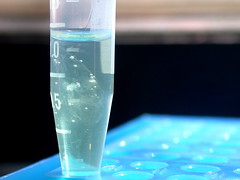
Image via Wikipedia
Ötzi the Iceman is the popular name for a 5,000 year-old mummy discovered frozen in the ice of the Alps in 1991. Studies of the Iceman has revealed an immense amount of information about him, including details of his life, his death, and his culture.
Although Ötzi’s mtDNA has previously been studied, researchers had only examined short segments which suggested that his mtDNA belonged to Haplogroup K. A new paper in Current Biology (subscription only darn it) details Ötzi’s full mtDNA genome for the first time:
"Using a mixed sequencing procedure based on PCR amplification and 454 sequencing of pooled amplification products, we have retrieved the first complete mitochondrial-genome sequence of a prehistoric European. We have then compared it with 115 related extant lineages from mitochondrial haplogroup K. We found that the Iceman belonged to a branch of mitochondrial haplogroup K1 that has not yet been identified in modern European populations."





